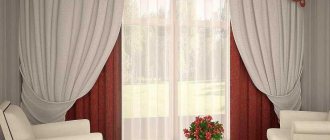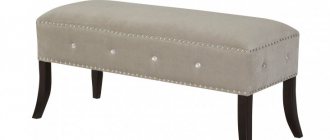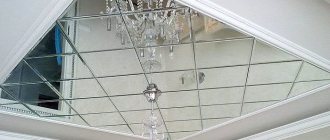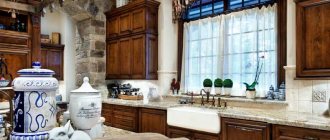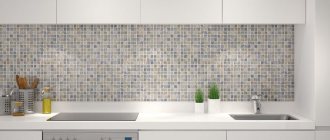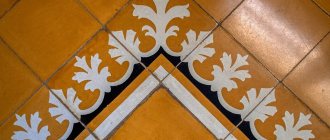Material selection
Where to begin? How to improve your mood right away? The main set of furniture in the hallway includes built-in wardrobes, a shelf for shoes, a bedside table for a mirror or a small table.
There may be accessories that direct the style of the room. OK it's all over Now. But at the same time, the main thing remains coverage.Nowadays there is a huge selection of finishing materials. When choosing tiles for the hallway floor, we must take into account quality, aesthetics and, of course, the material from which the product is made.
We need moisture-resistant, but easily washable tiles that do not leave streaks or streaks.
You also need a high-strength material that is resistant to mechanical stress. To prevent heavy objects from damaging the surface, there were no chips on the floor. To avoid scratching the surface with heels.
If there are children in the family, then it is advisable to install heated tiles. It is advisable to choose a tile that is not sliding, but more stable. The design of the tiles in the hallway is also influenced by the color scheme. Dirt stains are visible on light and black tiles.
Methods for finishing the hallway floor
The tiled area can rise like a podium or lie in the same plane with additional flooring. The height of the elevation should not exceed 5 centimeters. Having a steeper step may not only be inconvenient, but also unsafe. It is possible to fill the podium with tile adhesive or a special screed mixture. A mini-podium more clearly delimits the space of the hallway. He disciplines, since it usually doesn’t occur to anyone to cross the line of this section without taking off their shoes. So it turns out that tiles laid in this way in the interior of the corridor involuntarily help to keep it clean.
alternating laying of square and rectangular tiles with offset seams
The joints of floor coverings can be flat or shaped. The latter method is more attractive, but it is quite difficult to implement. Cutting tiles is a painstaking task. This requires calculation and caution. Such torment will be justified if smooth lines are a key interior feature. Curvilinear solutions are characteristic of the Art Nouveau style, which tends toward fanciful ornateness. A flexible joining threshold, which easily takes the desired shape, will help give a wavy joint a complete look. The butt threshold can repeat the tiled shade, match the color of the second coating or be in harmony with:
- Furniture.
- Skirting board.
- The door.
- Metal fittings.
relief floor tiles in the hallway interior
Types of tiles
Since we are choosing floor tiles, we must consider all options. First, get acquainted with the catalog and consider different options for photo tiles in the hallway.
Whatever tile we choose, it must be of high quality and practical. There are several types of flooring. Ceramic, porcelain stoneware, quartz vinyl, you can even buy “golden” Korean tiles.
Ceramic coating
Ceramic coatings may differ in both texture and composition. Their structure is either porous or non-porous. The surface type is glossy and matte.
Ceramic tiles in the hallway should also differ in technical indicators. If we have considered all the advantages of floor tiles in the hallway, then we can buy this type of tile.
Ceramic tiles are the most popular. It is successful because its technical parameters are the highest compared to other materials.
Recommendations from the designer
- Sliding wardrobe in the hallway - built-in models, modern design and features of using built-in wardrobes (120 photos and videos)
Table in the hallway: 110 photos of examples of beautiful design and tips for choosing the optimal table size
- Mirror in the hallway - 85 photos of the best modern ideas for use in hallway interior design
This type of tile imitates various patterns, ornamental stone and unusual wood structure.
There are also disadvantages, poor thermal conductivity, it is better to insulate floors, high retail price and labor intensity when performing work.
Porcelain tiles
Made like porcelain. Granite chips and quartz are added to the mixture and processed at high temperature. The quality of the design is durable, the ornament retains all colors.
The tiles in the hallway interior look decent and fit well into the design of the room. Since the slabs are made in large sizes, this gives the product even more stability.
The quality is higher than ceramics, but the cost is high. This often stops the buyer.
Quartz vinyl tiles
This tile is absolutely harmless because it is made from environmentally friendly ingredients. It includes vinyl and quartz, the mixture is fired at a very high temperature, so it is especially durable. But also expensive, like porcelain stoneware.
There are no bright patterns of floral patterns, but it perfectly resembles natural stone. The tile looks noble. It is durable and cannot be damaged by anything.
Gold Korean tiles
It appeared on the market recently, it is very difficult to manufacture. It can be called a special decorative tile for the hallway. A very complex technology with the addition of fiberglass. The drawing is placed between two layers
The word “golden” appeared due to the complexity of the technology and high practical properties. And Korean from the country of origin.
Qualitative characteristics
“The tiles in the interior of the corridor will not have to be repaired or changed frequently, which is also important in the current crisis.”
There are many requirements for floor types of ceramic tiles, but the main ones remain:
- Reliability.
- Quality.
- Abrasion resistance.
laying small hexagonal tiles is ideal for small hallways
Mechanical strength, high coefficient of friction, lack of sensitivity to chemical irritants - all this is inherent in the collections of ceramic tiles produced today.
Durability and strength are interrelated parameters. Tiles with increased mechanical resistance cannot but have the same high wear resistance. Products of this quality will not break or deform under standard use. This means that the tiles in the interior of the corridor will not have to be frequently repaired or changed, which is also important in the current crisis.
marble tiles in the interior of a hallway decorated in a classic style
The tile reacts well to moisture, or rather does not react. This is also very good, because people often enter the hallway with wet and dirty shoes. As for the friction coefficient, this indicator may vary.
Two types of tiles are optimal for the hallway:
- With a relief surface.
- With a smooth surface.
The latter is less desirable, as the floor can become slippery. Porcelain stoneware is the most popular among ordinary people. Tiles made from it have a whole list of advantages. It has zero water absorption and does not fade even after many years of use, since porcelain stoneware is painted over its entire thickness. If you prefer this type of tile for the interior of the corridor, then choose options with an anti-slip rating within R10-11.
patchwork tiles in the hallway: the variety of patterns focuses attention on the flooring
The opinion that the use of this type of finish will make the hallway cold and gloomy has a right to exist, but the latter problem is quite easy to deal with. And partial finishing will help with this. Only the “working” area, located directly next to the doors, can be tiled, and the rest of the space is lined with linoleum or laminate.
When deciding on a color scheme, give priority to embossed options in dark colors. Rough and light tile surfaces will lose their attractiveness over time, because dust and dirt will accumulate in the lagoons of unevenness, no matter how you wash them. Black tiles can only decorate a spacious hallway, as they tend to narrow the space. Considering that spacious hallways are a rarity for the layout of our houses, it turns out that collections in a black palette should hardly interest us.
The pattern of the tiles under the parquet boards harmoniously combines with the classic style of the hallway
Tile design
If we have decided on the choice of tiles, then we need to consider design secrets. Since hallways are usually small, you need to choose tiles of different sizes and take into account their color and pattern.
Large blocks increase the space, lighter colors make the room noble, and a dark tone removes all tile imperfections, small scratches and chips.
The tiles are laid in different rows: herringbone, staggered, diagonal or traditional stripes. There are other ways to lay tiles in the hallway.
Ceramic tile combination
1. Ceramic tiles and artificial stone are successfully used to design hallways. 2. An excellent option is to use several types of finishes. This option is especially beautiful for hallways with arched openings. For example, the lower part of the hallway wall is decorated with liquid wallpaper, while the frame of the arched passage is originally decorated with ceramic tiles imitating natural stone. 3. The combination of silk-look ceramic tiles with silver or gold-look tiles looks great in hallways with an elongated room area. Soft shades visually expand the walls. In addition, in a room with such finishing a touch of softness, comfort and homeliness is felt. 4. For lovers of high-tech style, large tiles with a texture imitating marble or stone are ideal for decorating the walls in the hallway. This background also fits perfectly into the classic interior design style of the house. 5. The hallway, the walls of which are decorated with tiles with a soft texture, looks cozy and beautiful. A correctly selected color scheme will make the room not only cozy, but also original. This option is more suitable for those who have pets in their apartment.
There are many options for decorating walls with ceramic tiles. But mainly, it all depends on the desired result, as well as the overall design and style of the house. In modern collections of ceramic tiles you can find a variety of shades and patterns, which allows you to correctly navigate the choice of design and design. Combining, at first glance, incompatible things is art. And bold steps and decisions in art help to invent unique designs.
Combined coatings
We often use different types of flooring. Even if the hallway is small, it can be divided into zones with different purposes.
The entrance to the room and the shoe area must be made of high-quality material. Ceramic or porcelain tiles are suitable here.
The next area where we remove outerwear can be made softer and more comfortable. Here you can combine tiles with laminate or linoleum.
Combining tiles in the hallway allows you to divide the area into several necessary parts. If they are combined in tone or materials are similar in texture, then you can achieve incredible success.
What can be combined with this design?
The need to combine CP and some other material most often arises in the hallway and kitchen, and due to the same characteristics of the material: the ability to conduct sound well and the coldness of the coating. In all such cases, the question arises of what exactly and how can be combined and whether this option is preferable for finishing the entire floor.
Parquet
Parquet and CP are a common combination. In this case, the question of interchanging materials does not arise: parquet is an extremely beautiful coating, but it tolerates mechanical damage and contact with water very poorly. A combination of these two materials is possible, and very different.
It is allowed not only to install an “island” near the entrance, but also to combine materials for decorative purposes: alternating stripes of parquet and ceramics, or even inserting ceramic tiles into the center of a parquet module. In all such cases, it is necessary to follow the rules of combination.
The CP does not change under the influence of moisture and temperature, while the tree noticeably expands. This feature is taken into account by maintaining a “temperature” seam between the ceramics and the parquet. The gap is closed from above with thresholds made of steel and aluminum or sealed with liquid cork, silicone sealant, or cork compensator. The second option is, of course, more aesthetically pleasing.
The tiles in the hallway turn into parquet
Laminate
No less often, CP is combined with laminate. The principle of designing the joint here is the same: an expansion joint is observed and closed with a threshold or filled with sealant. The threshold can be used either metal or plastic. However, laminate cannot be combined as freely as CP with parquet.
It is allowed to use laminate as the only covering for the hallway if you choose material of classes 33 and 34. Tiles, however, are more durable.
One of the options for joining tiles and laminate on the floor in the hallway is presented in the video below:
Linoleum
KP and linoleum are combined less often, simply because the materials differ very much in durability and abrasion. Linoleum is not resistant to mechanical damage, is not wear-resistant and, although it tolerates water well, it is sensitive to household chemicals. In the hallway, the material will have to be replaced after 3-4 years, while the tiles last for decades.
If such a need arises, the joints are made in the same way. It is advisable to close the expansion joint with a threshold, since linoleum is too soft a material.
Ceramic tiles are excellent for hallway decoration. It is durable, abrasion-resistant, easy to clean and extremely versatile. With its help you can decorate the hall in any style.
Tile on the floor in the hallway (photo)
Photo of tiles in the hallway
Read here! Soft hallway: modern projects, design options and nuances of using materials (125 photos)
Please repost
0
Decorating the hallway with tiles
Instead of old floorboards or impractical laminate, ceramic tiles for the hallway will come in handy. It creates a classic look with traditional patterns that combine sophistication and fashion trends. From the point of view of relevance, the following are considered win-win: Victorian pastels with gilding, black and white chessboard patterns, ethnic ceramics of Marrakech. You can make the final choice by studying the compatibility of shades on the color map.
Wall tiles for the hallway
The review of materials that can be used to decorate the walls with tiles in the hallway should begin with the already familiar ceramics. If some of its textures are unsafe for the floor due to slipperiness, then they can successfully decorate the walls of the corridor. Modern ceramic tiles in the hallway are not only white, but also colored with imitation leather, wood, silk or gold leaf. The more complex the decor, the more expensive the tiles with intricate textures.
Floor tiles for hallway
The disadvantage of ceramics is its low resistance to impacts when heavy objects fall. Porcelain tile is a little stronger: it is produced using technology similar to the creation of porcelain. Wear resistance is increased purely by applying paint to each module. In response to the question “how to choose tiles for the floor in the hallway?” any master will advise you to choose between quartz and Korean “golden” tiles made from a mix of natural stone, resin granules and polymers. The second type is still little known, but has every chance of overtaking ceramics in popularity.
Ceiling tiles for hallway
Decorating the ceiling is more difficult than the floor. It often requires additional sound insulation to protect against noisy neighbors. Foam plastic, light metal alloys, and pressed sawdust are suitable for coating. Decorating a hallway with tiles can combine several types of textures or levels. Between the two “floors” of the ceiling, it is advantageous to place LED lighting that saves energy. There is only one nuance to take into account: you can combine levels if you use gypsum tiles.
Foam modules are glued to a previously leveled and plastered ceiling. They are inexpensive and can be replaced frequently without much damage to your wallet. Their disadvantage is the shine inherent in polystyrene foam, which will remove the layer of water-based paint. Dark or light tiles in the hallway come in the following types:
- Pressed
. It is inconvenient because the thickness of the briquettes cannot be varied - it is standard 6-8 mm. The color palette is also limited exclusively to white. - Injection casting
. The foam is baked at high temperatures and becomes especially hard when subjected to two-stage steam treatment. The injection costs more than regular foam, but its color remains white. - Extrusion
. The only type of foam ceiling that allows you not to limit yourself in choosing a shade due to the fact that a film of any kind is glued to the original briquette of gray tiles in the hallway.
Tiles at the entrance door in the hallway
The threshold is needed to decorate the entrance area and door. It is either an element of a wooden box, or is separately created from other materials. The tile threshold in the hallway will become a natural obstacle, a protective barrier against the penetration of street dirt into the home. It greatly simplifies cleaning, for which you only need a mop and detergent. Like any other investment in renovation, the threshold does not tolerate compromises on quality.
The tiles in the hallway in this area are chosen in dark colors due to their reduced soiling. When decorating a threshold, it is impossible to predict exactly how many tiles will be needed - to anticipate a possible shortage, you need to buy 5-10% more material than required according to preliminary calculations. Regardless of whether the masonry is done by a professional or a beginner, this will compensate for chips and other possible shortcomings.
